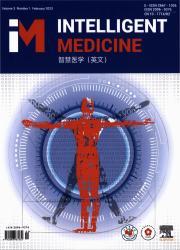基于人工智能的计算机视觉方法在肝病中的应用:文献计量学分析
IF 6.9
Q1 COMPUTER SCIENCE, INTERDISCIPLINARY APPLICATIONS
引用次数: 0
摘要
医学影像对肝脏疾病的诊断和治疗至关重要,对影像的客观分析对精准医学至关重要。人工智能(AI),特别是计算机视觉,与肝病学的整合已经取得了相当大的增长。本研究进行文献计量学分析,以绘制人工智能在肝脏疾病影像学研究中的演变、主要趋势和重点。我们使用Web of Science Core Collection和PubMed数据库进行了全面的文献综述,时间跨度为1990年1月至2023年7月,关键词为肝脏疾病和医学成像中的人工智能。搜索结果为3629份文件,2017年之后出版物激增。美国和中国在论文发表量方面处于领先地位,前者的h指数得分和引用次数更高。然而,对相关领域的出版物做出重大贡献的更多研究机构位于中国。关键词分析显示对肝纤维化、肝细胞癌、肝硬化和脂肪肝疾病的广泛研究。目前,图像分割、分类、配准等技术较为普遍,满足了病灶检测、疾病预后等临床需求。卷积神经网络(cnn),特别是U-Net模型,被广泛使用。本文综述了这些发现,以指导人工智能辅助肝病诊断和管理的未来进展。本文章由计算机程序翻译,如有差异,请以英文原文为准。
Application of artificial intelligence-based computer vision methods in liver diseases: a bibliometric analysis
Medical imaging is essential for the diagnosis and treatment of liver diseases, and the objective analysis of such images is vital for precision medicine. Integration of artificial intelligence (AI), particularly computer vision, into hepatology has seen considerable growth. This study conducts a bibliometric analysis to map the evolution, principal trends, and focal points of AI in liver disease imaging research. We conducted a comprehensive literature review using the Web of Science Core Collection and PubMed databases, spanning January 1990 to July 2023, with keywords related to liver diseases and AI in medical imaging. The search resulted in 3,629 documents, with a surge in publications after 2017. The United States and China led in terms of publication volume, with the former exhibiting higher H-index scores and citation counts. However, greater number of research institutions that contribute significantly to publications in the relevant fields are based in China. Keyword analysis revealed extensive research on liver fibrosis, hepatocellular carcinoma, cirrhosis, and fatty liver disease. Techniques such as image segmentation, classification, and registration are prevalent, meeting clinical needs like lesion detection and disease prognosis. Convolutional neural networks (CNNs), particularly U-Net models, are predominantly utilized. This review synthesizes the findings to guide future advancements in AI-assisted liver disease diagnosis and management.
求助全文
通过发布文献求助,成功后即可免费获取论文全文。
去求助
来源期刊

Intelligent medicine
Surgery, Radiology and Imaging, Artificial Intelligence, Biomedical Engineering
CiteScore
5.20
自引率
0.00%
发文量
19
 求助内容:
求助内容: 应助结果提醒方式:
应助结果提醒方式:


